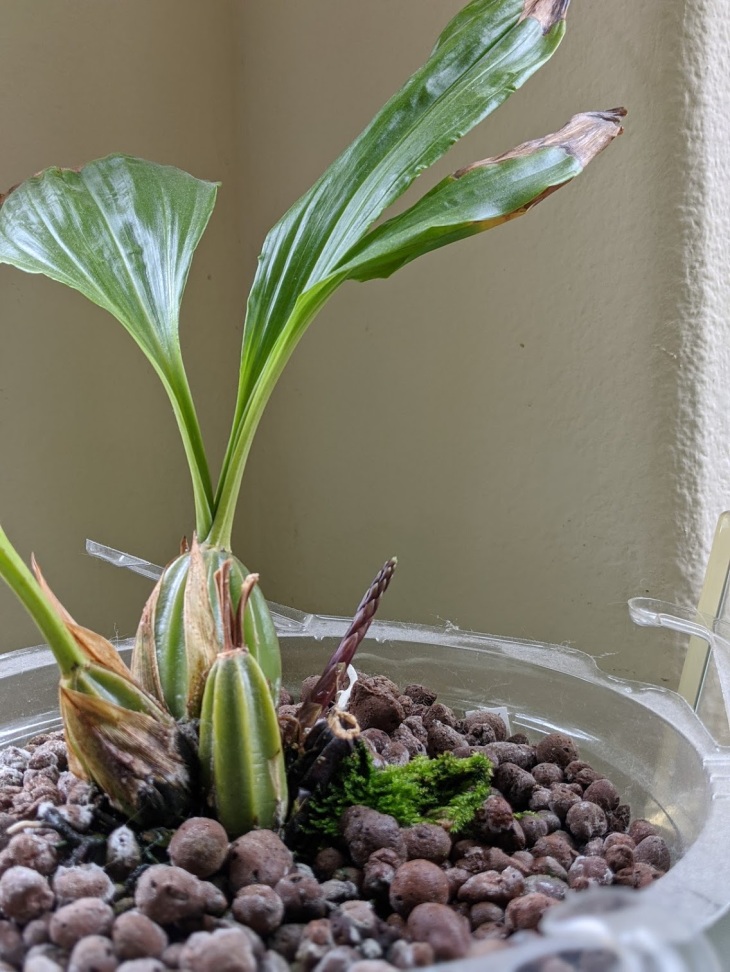
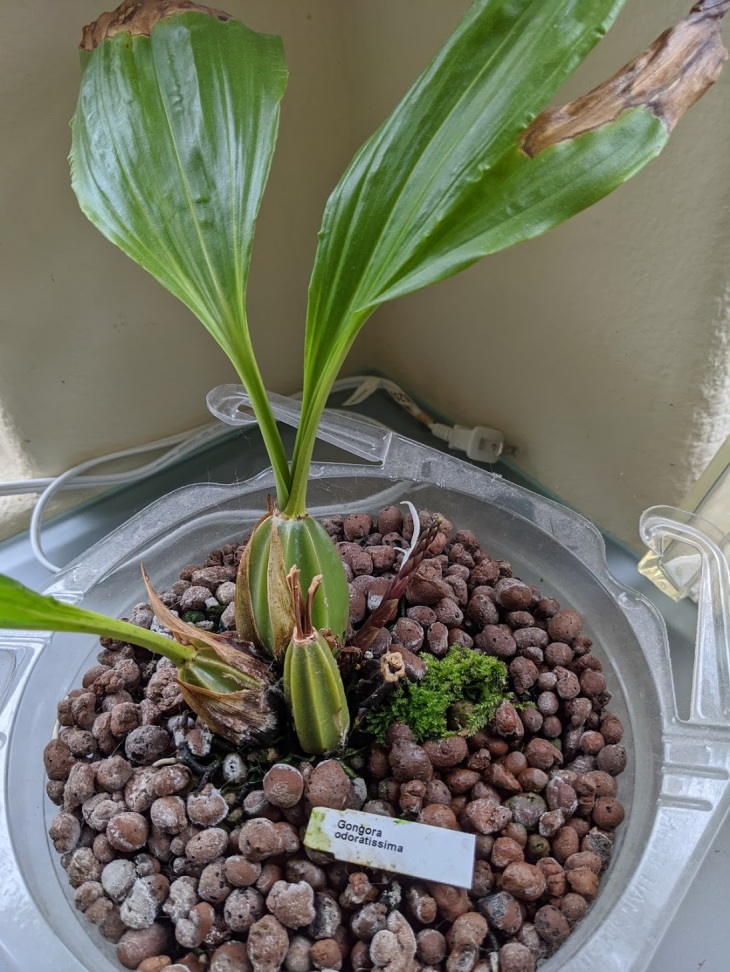
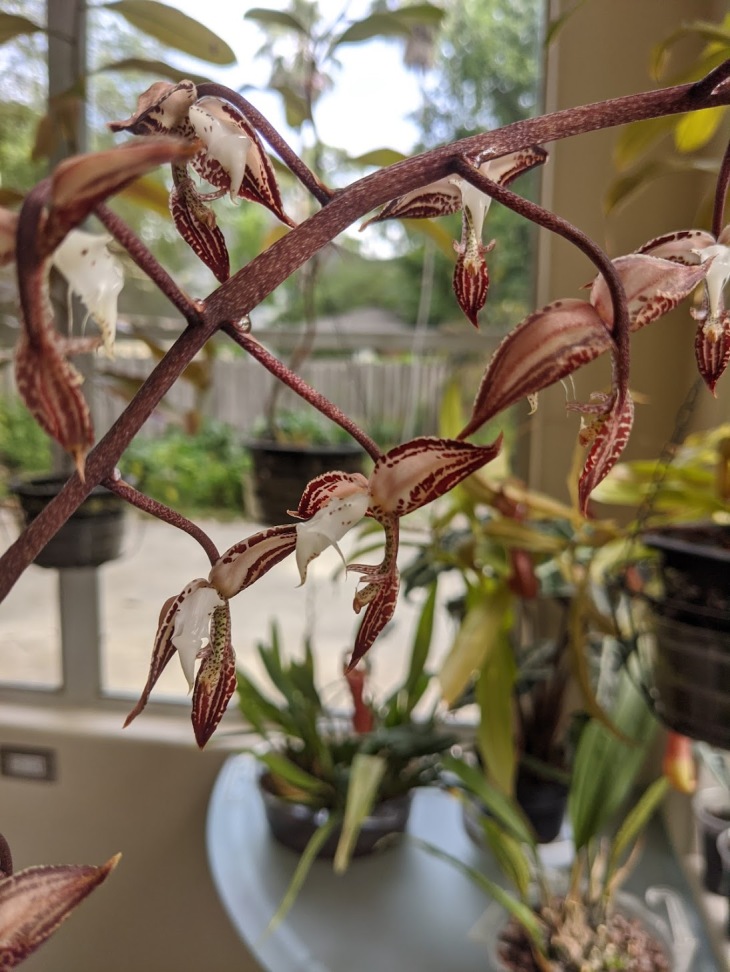
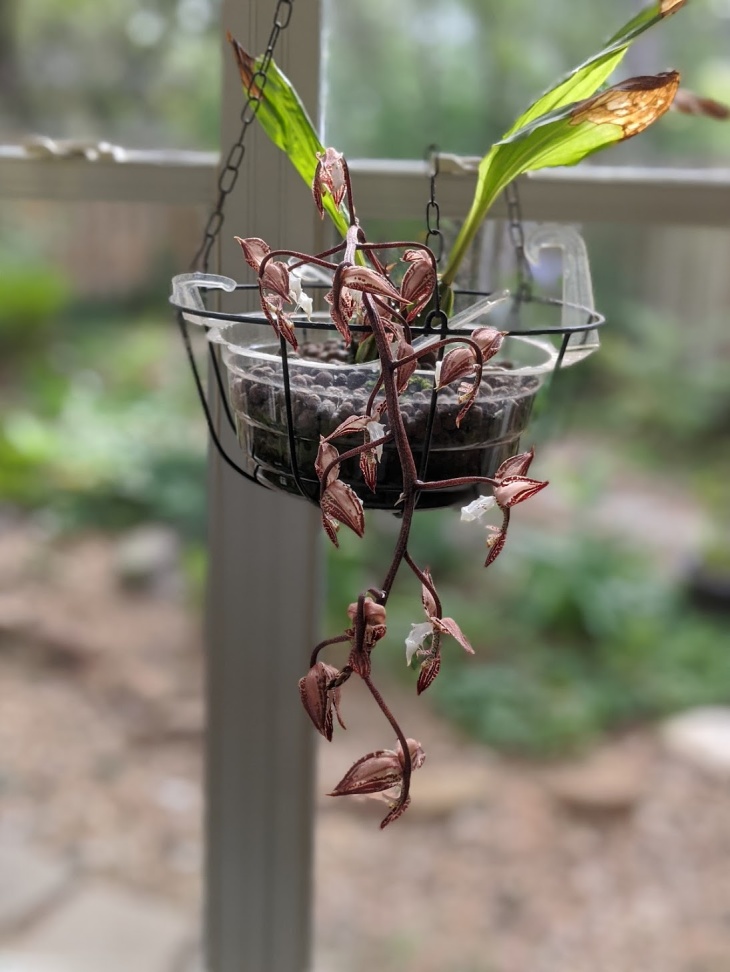

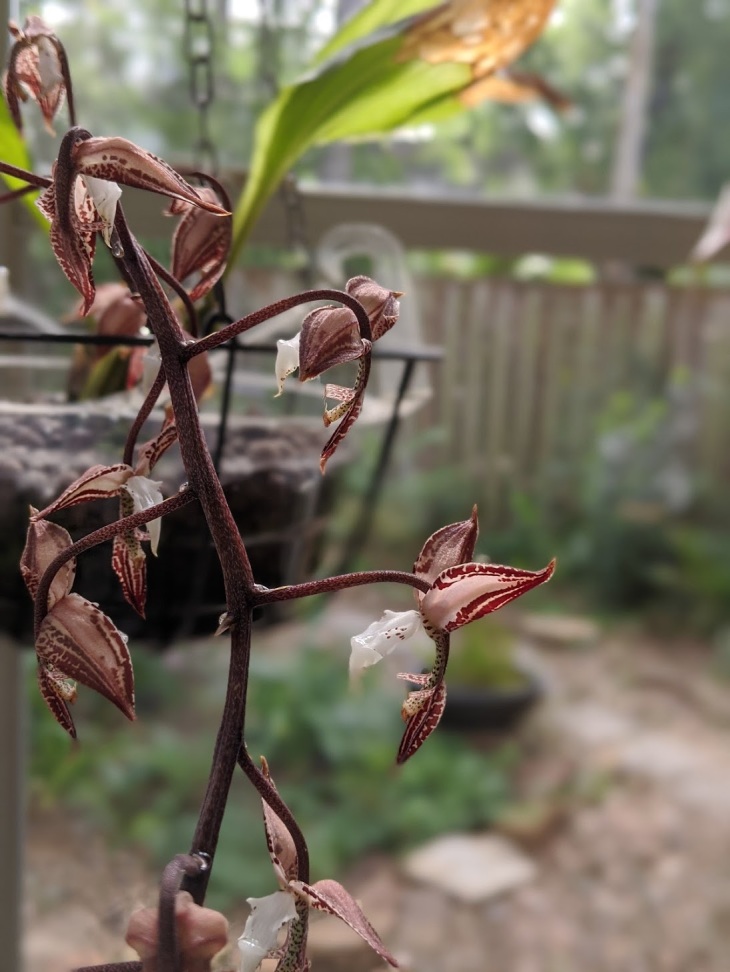
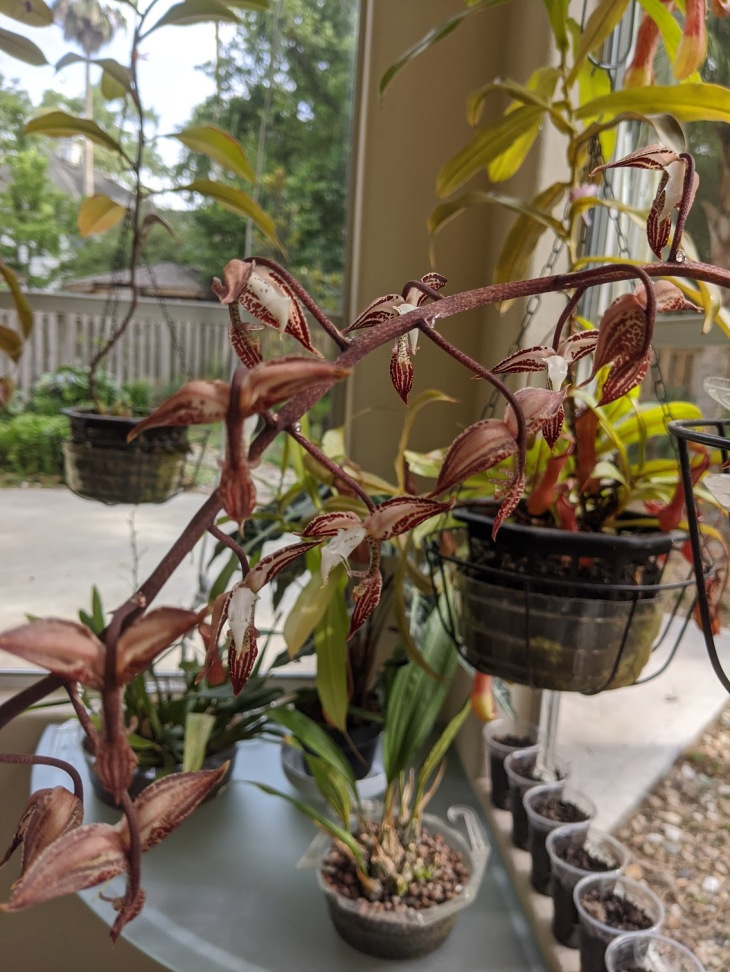
I picked this up at the Houston Orchid Show in 2019, it’s mid May 2020 and it has its first blooms. the blooms have a strong, sweet smell, which should be obvious given its name. I’ve found it needs far more water and sun than the usual house orchids. This window gives it strong morning sun for several hours in all but the winter months.
Gongoras were first mentioned in the mid 1800s after being discovered by Spanish explorers in their native Ecuador, Columbia and Venezuela.
Gongoras are true epiphytes, I find growing epiphytes in semi-hydro works extremely well. ( a clear shallow bowl, pebbles and about 1″-2″ of water keep in the bottom of the container ). As you can see from the tips of the leaves, it found the winter too dry in here, even in Houston. It’ll probably need a greenhouse in drier parts of the world. It also loves warmth, There is no winter hibernation for this orchid.
Gongoras like the rest of the Stanhopeinae subtribus grow large, this one has doubled in size in a year and I hope it’ll continue to do so for several years. Blooms come in the spring.
They are pollinated by solitary male bees, solitary bees are native to the Americas, the hive bees were imported by the Europeans.
Propagate by division
… more photos and info as it gets larger and I learn more about it



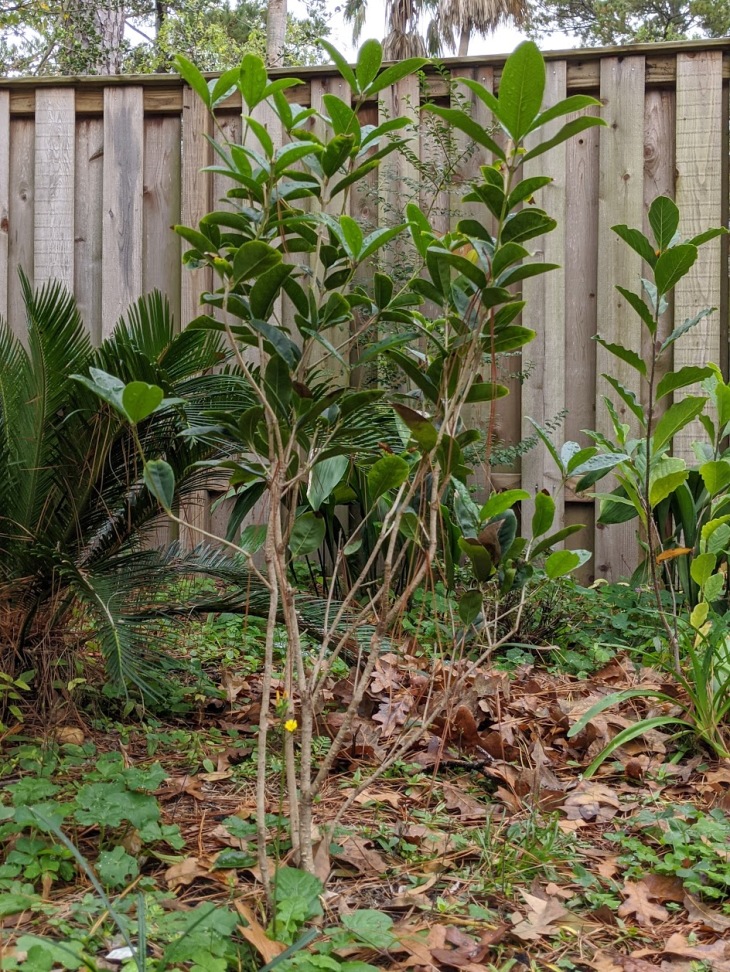




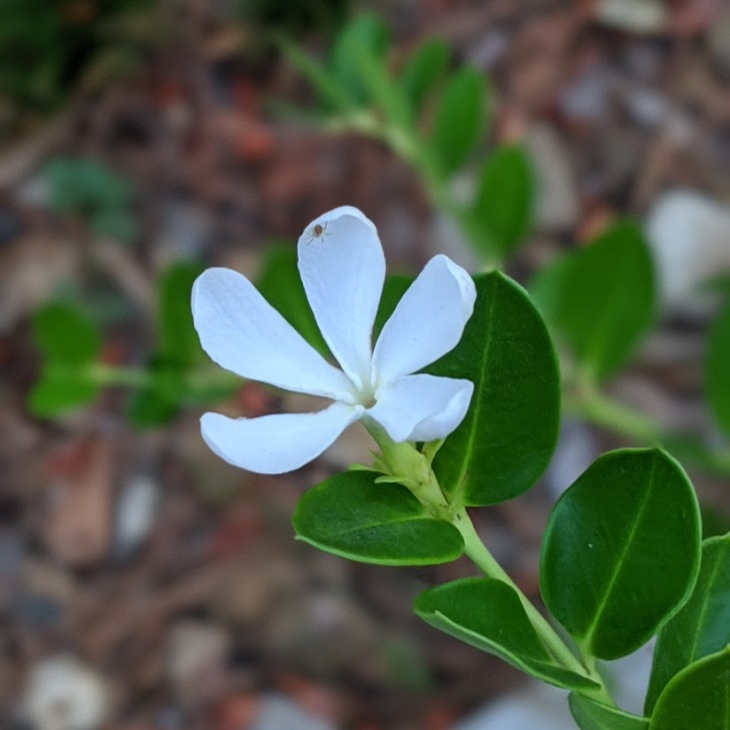


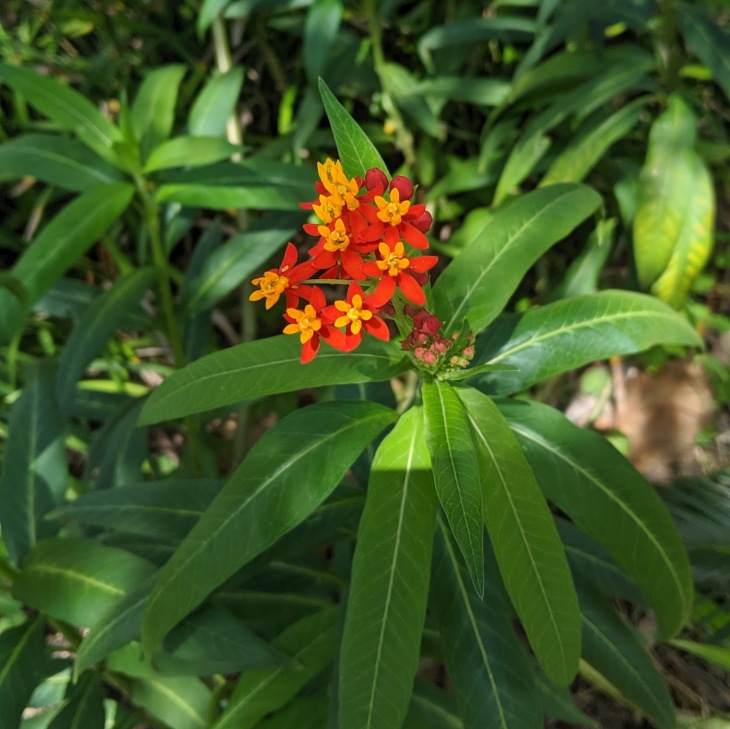







You must be logged in to post a comment.